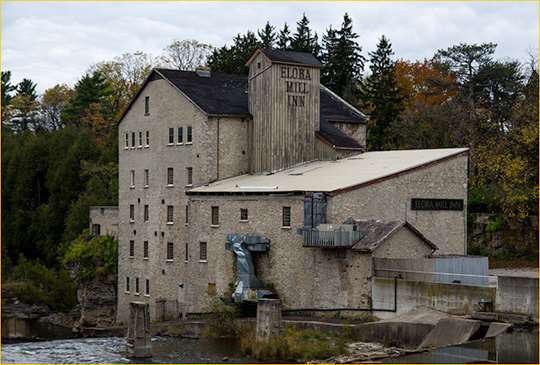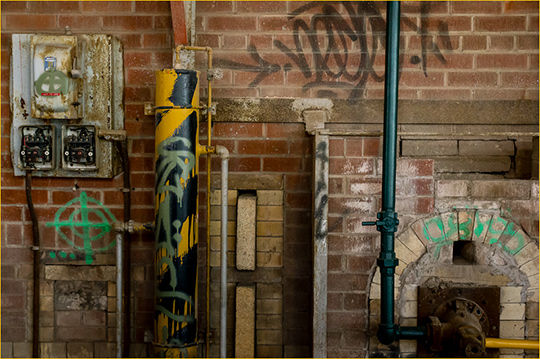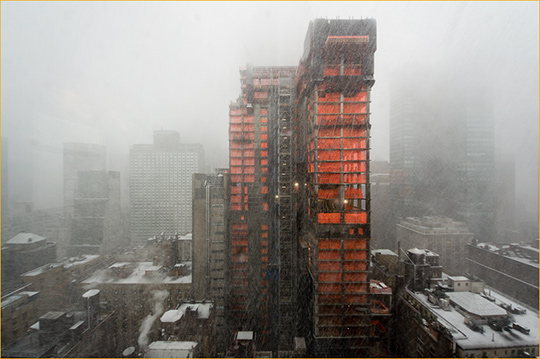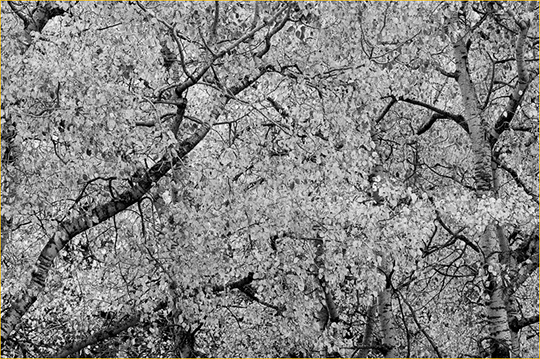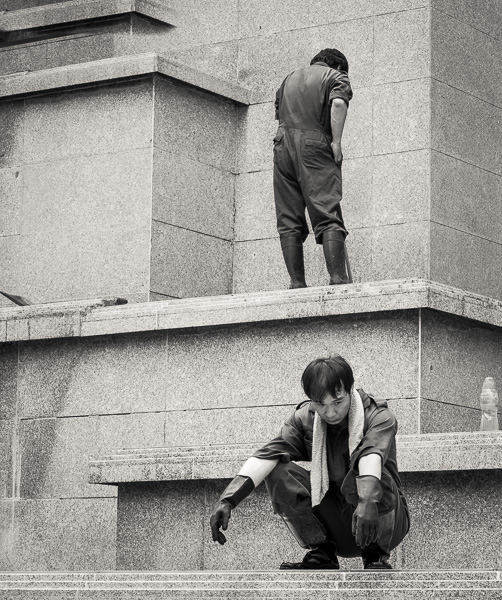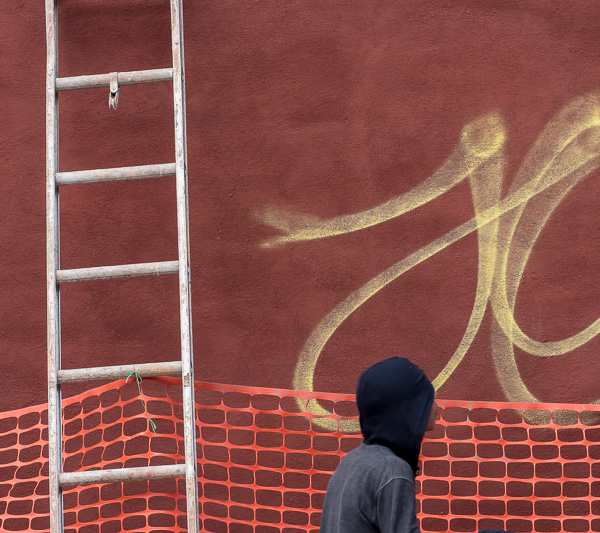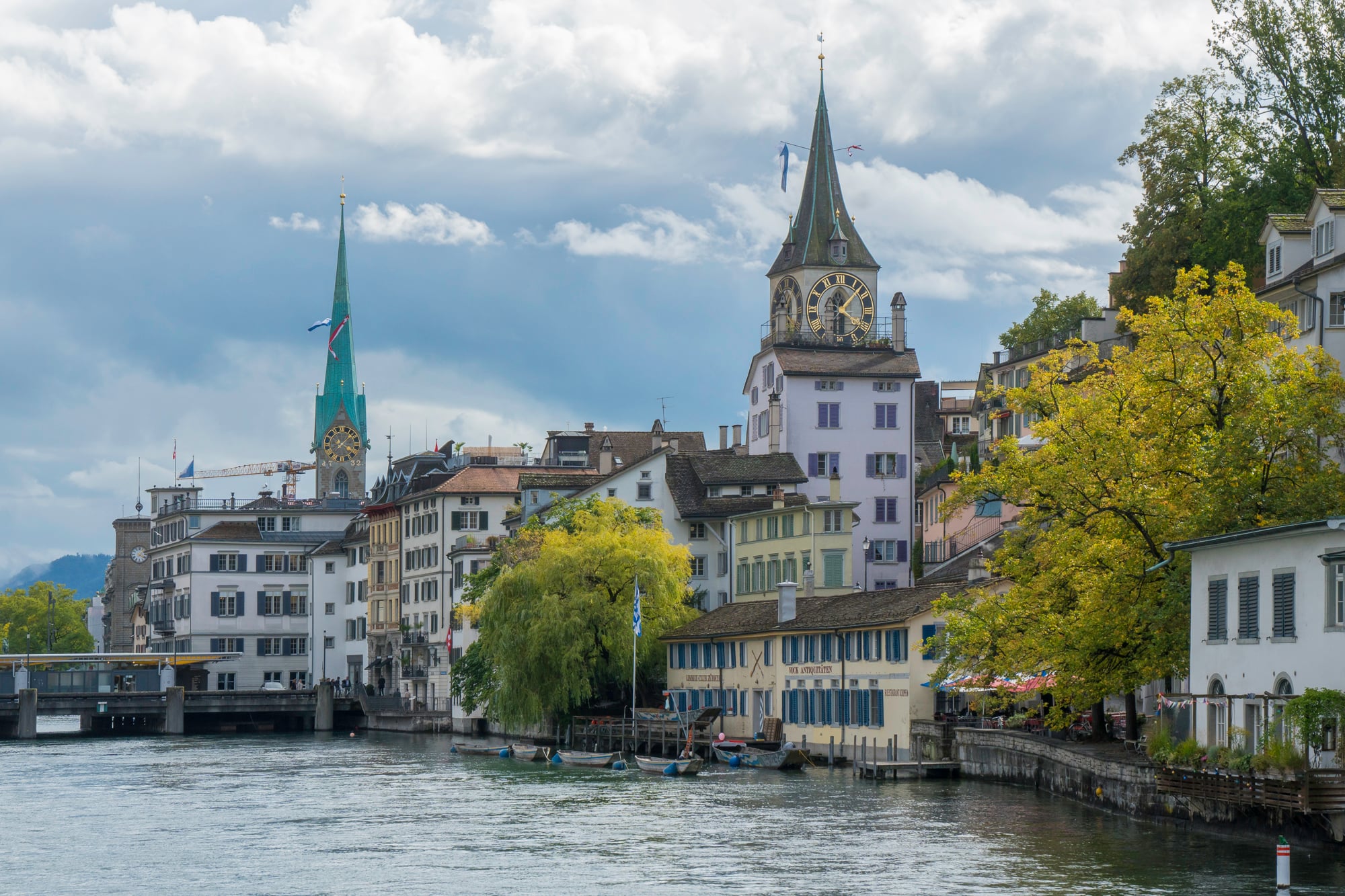
Let’s start with the basics. This new (October, 2012) lens is a DT design, meaning that it is for Sony’s Alpha mount APS-C cameras, such as the new SLT A65 and A77 (and NEX cameras via an LA-EA2 adaptor). Indeed this lens is sold as a “kit lens” with the A77. But, this is nokit lens. At US $700 when purchased separately it certainly isn’t priced like one, and as will be seen it doesn’t perform like a typical kit lens either.
When I first used this lens at a Sony press event in San Diego in August, I hadn’t shot with it for more than a few hours before I realized that this lens was something special. After working on dozens of A77 and NEX-7 files taken with it over a four day day period I knew that this lens was a cut above.
One of the lens’ designers was part of the engineering team assembled for us to interview, and I asked him directly why this lens wasn’t branded as a “G” lens, which is Sony’s designation for their top-of-the-line optics. I also asked this question of several Sony US marketing executives.
Their answers were somewhat vague, but always said with a smile and a twinkle in their eyes. The bottom line as I interpret it is that this lens is designed with the optical and mechanical quality of a “G” lens, but for internal company reasons it was decided not to brand it as such. Indeed some early testers reported that their samples had “G” in the EXIF data, so clearly this was a business decision made after initial design and manufacturing. Maybe it’s because Sony doesn’t want to use the “G” designation on a reduced frame (DT) lens for the first time. In any event, purchasers should feel confident that this is a first rate optic worthy of the “G” designation.
Build quality is high. The zoom ring is smooth running, and the focus ring, though having an indistinct feel, is par for the course when it comes to AF lenses. There is an AF / MF switch as well as a zoom lock switch. A metal lens hood is included. This is also the first Sony lens to be designated as weather resistant – at least when used on an A77, which also has that designation.
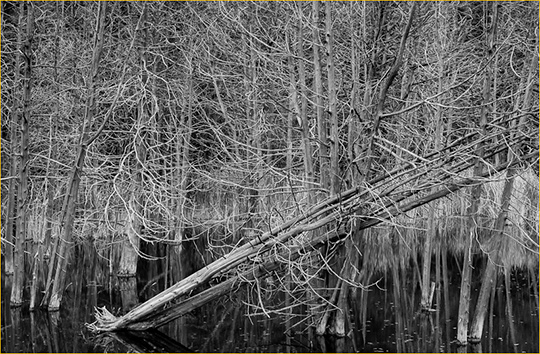
Flooded. Wellington County, Ontario. October, 2011
Sony NEX-5n with LA-EA2 and 16-50mm f/2.8 @ ISO 320
Since the DT 16-50mm is a reduced frame lens, designed for APS-C sensor equipped Sony DSLRs, it will, of course, work with a NEX camera and the autofocus LA-EA2 lens adaptor. (First-generation NEX cameras require a firmware upgrade to be able to use the LA-EA2 – coming in late 2011).
Because I am currently working with the NEX-5n this is the camera that I tested it on. IQ results should essentially be the same on an Alpha body.
My subjective evaluation of lens quality (no lab rats were killed in the testing of this lens) is that it is very good, but not excellent. Resolution is very fine, but with some quite visible drop-off at the corners below f/5.6. This is mostly so at the wide end, with reasonable corner resolution starting at f/4 at the longer end of its range.
Vignetting is modest, and also decreases with aperture and focal length, to the point where it simply isn’t a concern for most images. If it is, a slight correction of Lightroom for example, is all that’s needed.
The Bad News
The sample DT 16-50mm f/2.8 lens which I used In San Diego in August was without obvious flaw. The one I purchased at retail here in Toronto was unfortunately not as blessed. It suffered from some noticeable decentering, with the left side quite a bit softer than the right. This problem is seen at all apertures so it can not be attributed to DOF.
I ended up returning the lens, the first time I’ve done this in quite a few years. But I missed it, so I visited a Sony store that had several lenses in stock. I tested them each and found one that did not display decentering, and re-purchased it.
I should point out that, in Canada at least, Sonystyle stores can be very accomodating in terms of in-store testing and returns, if required.
Elora Mill. Elora, Ontario. October, 2011
Sony NEX-5n with LA-EA2 and 16-50mm f/2.8 @ ISO 100
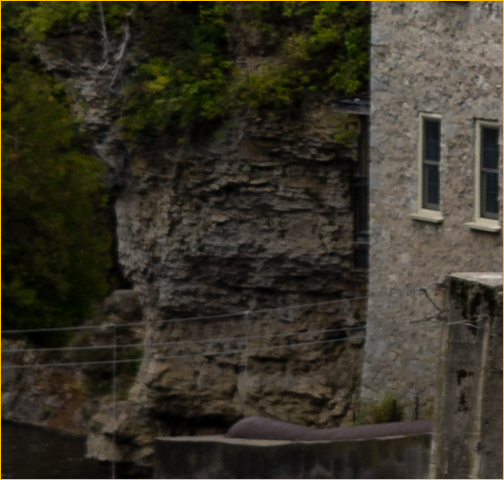 |
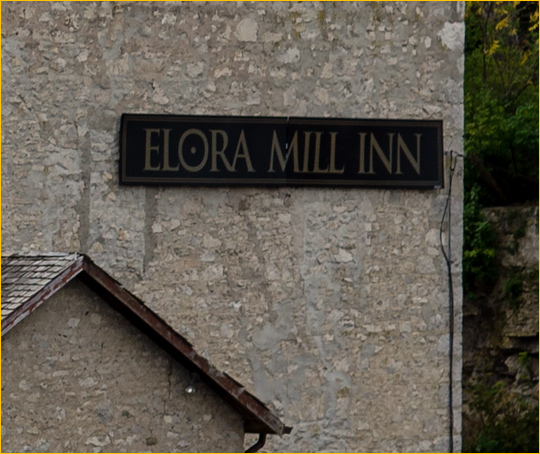 |
|
Frame Left |
Frame Right |
I would simply add that decentering is not an uncommon occurance, and that lenses from all companies can be found with varying levels of decentering. Top lenses (read – very expensive) are less prone to decentering because there are additional levels of hand assembly and testing, but they are not immune. It has always been the case that fussy pros will visit their local dealer and test as many lenses are the dealer has on the shelf, to find the best one. (This was in the days before online shopping, when one had a local dealer as a friend, and he would allow you this perk for being a loyal customer.)
Pipes. Toronto, Ontario. October, 2011
Sony NEX-5n with LA-EA2 and 16-50mm f/2.8 @ ISO 2500
The Austrian web sitePhoto Reviewhas tested the DT 16-50mm f/2.8 usingImatestand reports quite excellent results. From a photographer’s perspective, both in terms of handling as well as overall image quality, the DT 16-50mm f/2.8 is a very welcome lens and a strong performer. Just be sure to test yours for decentering.

If you have an accommodating retailer, testing a lens for obvious decenting is fast and simple. Bring a table-top tripod to the store along with your laptop computer. Set things up on a counter and point at a paralell wall at least 30 feet away. If it is a display wall, that’s fine. Just do your best to be as square to the wall as possible.
Now take a shot wide open and at about three stops closed down. If the lens is a zoom, try a wide, mid and long focal length. That’s about six shots in all and should take no more than a few minutes to complete. (Don’t turn this into a marathon, and do try and avoid busy times of day, so that you’re not imposing too much on the retailer’s patience.)
Now, load the files onto your laptop, zoom to 100%, and view the center as well as the left and right sides. The thing is not to be too critical of corner sharpness per-se, but instead look for differences between the left and right side. If they look essentially the same, then the lens likely doesn’t suffer from serious decentering. If there is a marked difference, it does.
Please don’t write a tell me that this test isn’t as rigorous as it should be. I know. But unless you can convince a retailer to let you take home a half dozen lenses for testing, this is a fast way of determining if there are major and obvious flaws in one that you intend on buying. Being able to do this sort of in-store test is a very good rationale for shopping at a local retailer rather than online. You may pay a few dollars more, but at least you’ll know what you’re getting.
LA-EA2 Alpa Lens Adaptor
Sony’s NEX cameras, though they have an APS-C sized sensor as do the A55 and A77 cameras, don’t use Sony Alpha mount lenses directly. The reason for Sony developing their new “E” mount instead is so that new smaller and lighter lenses can be provided that work better with the NEX’s contrast detection autofocus system. This means that lens elements, motors, gears, and other mechanisms are all made is light as possible to aid rapid focus.
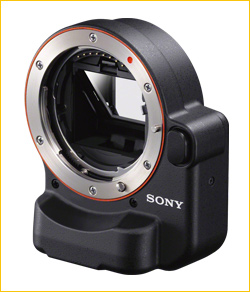
When the NEX system was introduced Sony also made available an adaptor for A series lenses called the LA-EA1. It provided full exposure automation, but could only autofocus a limited number of lenses, and even then quite slowly.
The new LA-EA2 changes all that, and now any Sony / Zeiss / Minolta Alpha mount autofocus lens can be used on a NEX-5n, NEX-7 or VG-20 video camera, with full high speed phase detection autofocus. Even older screw drive AF lens.
The reason for this is that the EA2 has a built in focusing motor as well as a similar “Translucent Mirror” autofocus system as found in current Alpha cameras. The AF mechanism has 15 focus points with three cross sensors.
Sony has indicated that previous NEX-5 / 3 / 3C / FS100 / and VG10 bodies will need a firmware upgrade to support the EA2, and that this will become available before the end of the year.
Red Construction Hoarding. New York. October, 2011
Sony NEX-5n and LA-EA2 with Sigma 8-16mm @ 8mm. ISO 100
Size
The first impression, when one looks at photos of the EA2, is that it is large. In reality it isn’t that much larger than the EA1, and given that it contains a Translucent mirror, complete phase detection autofocus system and a focusing motor, it’s size is quite modest.
Let’s be honest. Compared to E mount lenses, Sony A mount lenses are for the most part quite large. No larger than other maker’s lenses, but if you’re looking at Sony’s better “G” series lenses and especially their Zeiss glass, these are full frame and, shall we say, not petite.
For this reason any perceived issue regarding the EA2’s size is a sideshow compared to the relative bulk of most lenses which will be attached to it. You’ll likely buy the EA2 if you already own some Sony Alpha lenses and would like to use them on your new NEX camera. You’ll do so as well because you want not just the focal lengths apertures and image quality that these provide, but al fast Phase Detection autofocus.
In other words, once you put a lens on the EA2 any concerns about its size will disappear relative to the lenses themselves.
Treescape. Toronto, Ontario. October, 2011
Sony NEX-5n with LA-EA2 and 70-300mm f/4.5 G SSM lens @ ISO 400
In Use
It’s funny, but whenever I use my Sony / Zeiss lenses on an EA1 or EA2 I am taken with how large and heavy the lenses are. When I use them on my A900, they just are what they are – large, heavy full-frame lenses, but not strangely so. It’s all relative.
But, with the exception of really large lenses like the 70-200mm f/2.8 and 70-400 f/4-f/5.6, they are quite managable. The EA2’s base and bulge on its left side actually fit the hand quite well, and all-in-all I have no issues with using it along with small to medium size Alpha Mount lenses.
Do keep in mind if your’e considering an EA2 that you will not have any image stabilization available. Alpha lenses rely on in-body stabilization with Alpha cameras, and NEX cameras rely on in-lens optical stabilization. So, put an Alpha lens on a NEX and you end up with none.
Performance
With its Translucent (pelicle) mirror and 15 focus point AF with three cross sensors, a NEX body and the EA2 focus comparably to an A65 or A77, which is to say, very fast indeed. I haven’t had an opportunity to do a side by side comparison, but I have no reason to doubt that their performance is similar.
I also looked for any sign of ghosting, which was reported by some on the first generation A-55, though I never saw it myself. Once again, I can see no evidence of ghosting from the use of Sony’s Translucent Mirror on the EA2, and reading current reviews of the A77 and A65, neither does anyone else.
Other than this, there isn’t much more to say. As with all new Sony Translucent mirror equipped cameras there is a light loss of between one third and one half stop. Some people are concerned about this. Well, in this day of noiseless ISO 800 cameras, and decent image quality up to ISO 6400, if a third of a stop concerns you then you definitely shouldn’t buy an EA2 or any Sony camera using this technology. On the other hand, if you are a sensible photographer who is more concerned with practicing their art and craft then the loss of less than 1/2 EV shouldn’t be of concern.
October, 2011
Read this story and all the best stories on The Luminous Landscape
The author has made this story available to Luminous Landscape members only. Upgrade to get instant access to this story and other benefits available only to members.
Why choose us?
Luminous-Landscape is a membership site. Our website contains over 5300 articles on almost every topic, camera, lens and printer you can imagine. Our membership model is simple, just $2 a month ($24.00 USD a year). This $24 gains you access to a wealth of information including all our past and future video tutorials on such topics as Lightroom, Capture One, Printing, file management and dozens of interviews and travel videos.
- New Articles every few days
- All original content found nowhere else on the web
- No Pop Up Google Sense ads – Our advertisers are photo related
- Download/stream video to any device
- NEW videos monthly
- Top well-known photographer contributors
- Posts from industry leaders
- Speciality Photography Workshops
- Mobile device scalable
- Exclusive video interviews
- Special vendor offers for members
- Hands On Product reviews
- FREE – User Forum. One of the most read user forums on the internet
- Access to our community Buy and Sell pages; for members only.






